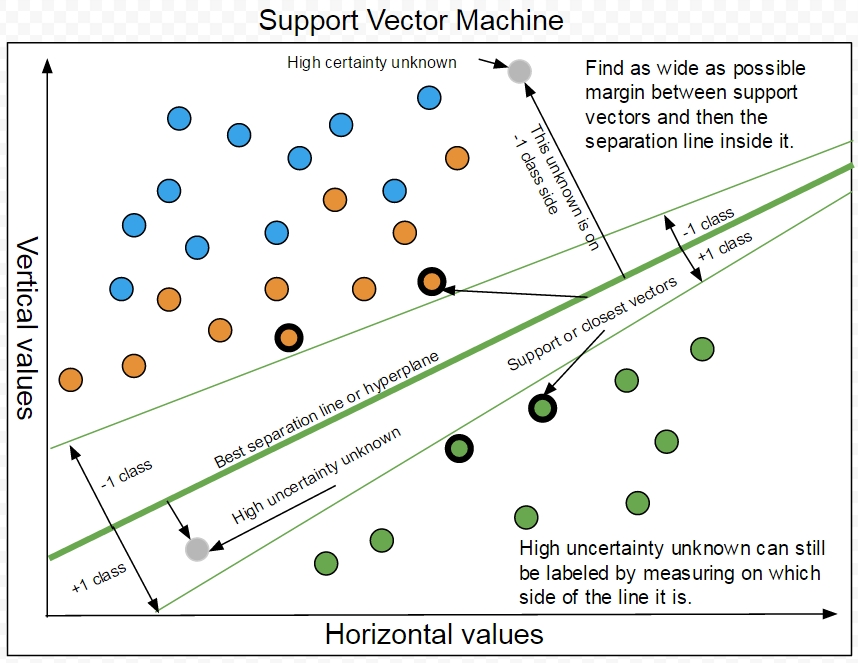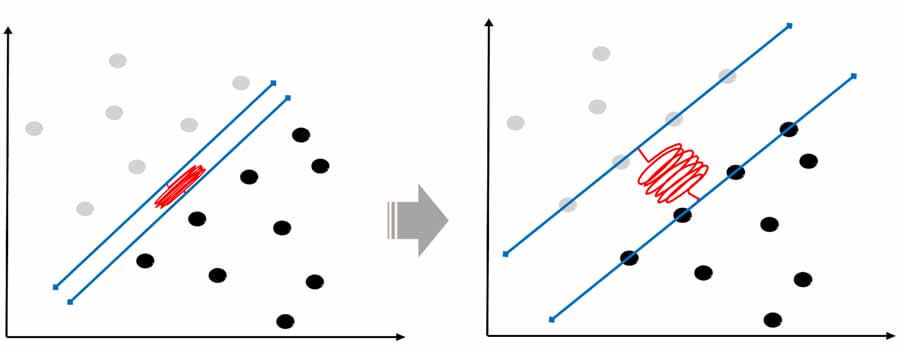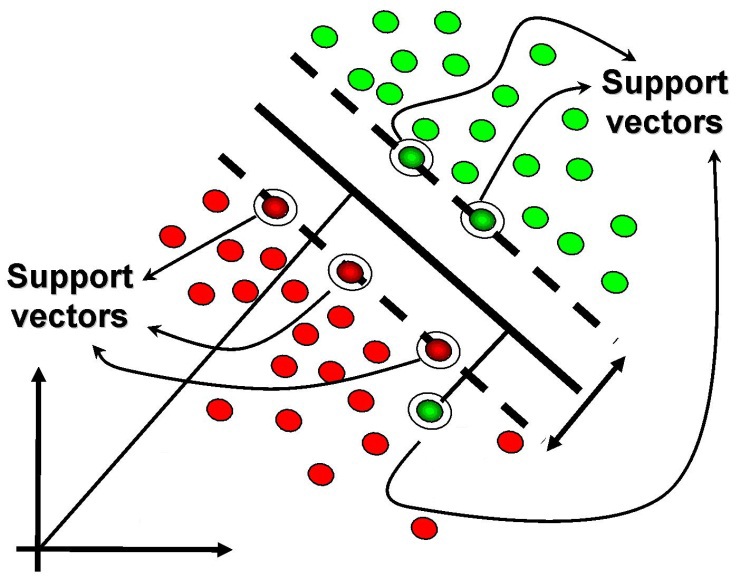

They are the main components in making an SVM. The support vectors help in decreasing and increasing the size of the boundaries. The hyperplane has decision boundaries around it. If these points were removed, the position of the hyperplane would be altered. They are responsible for the construction of the hyperplane and are the closest points to the hyperplane. Support vectors are special data points in the dataset. So let’s start looking at them one by one. These terms will always come whenever you use the SVM algorithm. To understand SVM mathematically, we have to keep in mind a few important terms. Therefore, we will be seeing some graphs in the article. In addition, an important thing to note is that SVM in Machine Learning always uses graphs to plot the data. The data points based on their position according to the hyperplane will be put in separate classes. It separates two different classes of data by a hyperplane. The support vector machine uses two or more labelled classes of data.

However, it is more complicated than SVM.

It is quite similar to SVM with only a few changes. In regression, we call the concept SVR or support vector regression. Since the topic is under research, we will only look at what it means. SVM in clustering is under research for the unsupervised learning aspect. However, there are rare cases of use in unsupervised learning as well. There are some cases where we can use it for regression. Keeping you updated with latest technology trends, Join TechVidvan on Telegram What is SVM in Machine Learning?Īn SVM is a classification based method or algorithm.


 0 kommentar(er)
0 kommentar(er)
